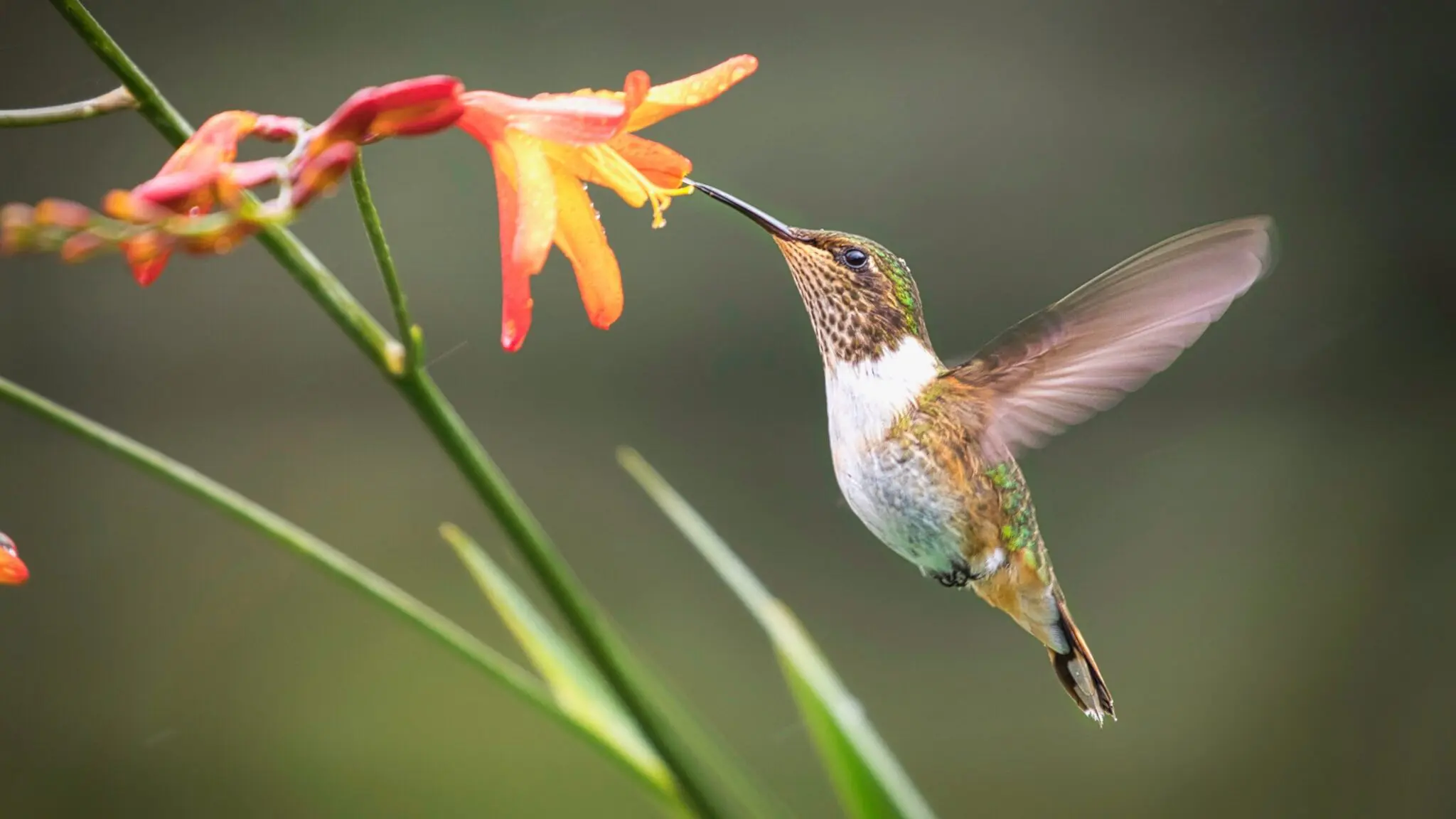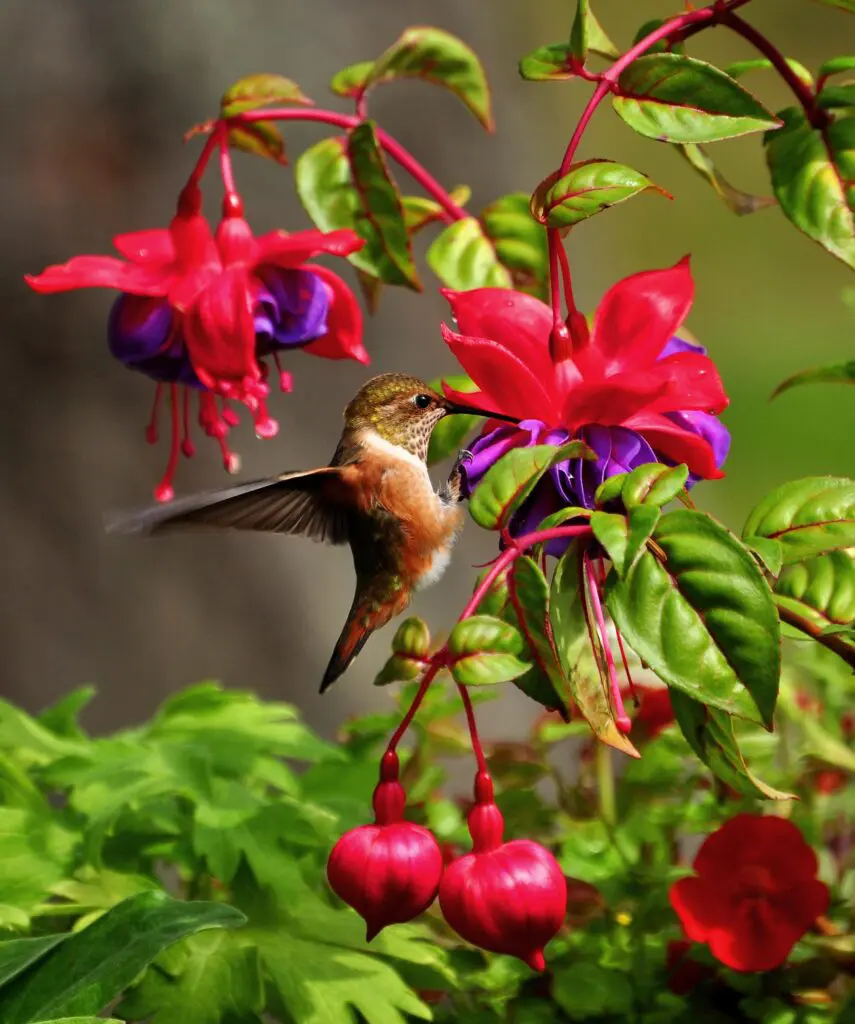Species information
Read about any species of Hummingbird in more depth on our Database.
As a global Partnership, we believe in internationalism. We have translated as much content in your language as our resources allow. Please visit the English language site to view all of our content.

Hummingbirds are marvels of the sky, famed for their unique and impressive flying abilities. They may be the world’s smallest birds, but there is no risk of them flying under the radar thanks to their eye-catchingly colourful plumage.
The hummingbird family is 368 species strong, in a range of shapes, sizes, and dazzling colours. They are native to the Americas, with the highest diversity around the Tropics.
The greatest risk to their survival is habitat loss. Many species breed in old, tropical forests which are facing deforestation. Hummingbirds time their migration based on when flowers are due to bloom – however, climate change is causing many plants to bloom earlier than usual, reducing food availability. Other threats include pesticide poisoning and collision with windows.
Family: Trochilidae
Diet: nectar and insects
Life span: 3 – 5 years
Weight: 1.6 – 6.5 grams
Group name: a charm
Read about any species of Hummingbird in more depth on our Database.
Shop our sustainable merchandise to showcase your love of hummingbirds while supporting our conservation efforts.
Did you know?
Hummingbirds get their name from the humming sound their wings make when in flight or hovering – the noise is often compared to the sound of a bee or mosquito. A hummingbird can flap its wings up to 80 times a second, or as many as 200 times in a dive. Hummingbirds have unique, impressive flight abilities, such as being able to fly backwards and upside down.
These small birds have big appetites due to a fast metabolism, and can consume up to 12 times their bodyweight in nectar every day. They are often highly territorial and fiercely guard their own patch of flowers. They face the risk of starvation during sleep or when food is scarce, so enter a hibernation-like state called torpor at night to conserve energy. This decreases their body temperature, and heart and breathing rates.
The Bee Hummingbird, found only in Cuba, is the world’s smallest bird. Weighing just 1.6 grams, they are easily mistaken for bees. Their dainty eggs are around 6mm long (around the size of a coffee bean!) and are laid into tiny, cup-shaped nests made of cobwebs and moss. The cobwebs allow the nest to stretch as the chicks hatch and grow. The species is classified as Near Threatened, with its main threat being habitat loss due to conversion for cattle pasture and agriculture.

Our evidence-backed approach ensures your money will always go where it’s needed most
Join the ever growing community of Species Champions supporting our work to prevent extinctions
Join our worldwide community of bird lovers, and help to make a real difference